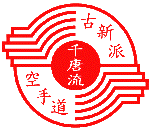Chito-ryu History


Karate is an unarmed method of self-defense developed in Okinawa, Japan. At its core, it is basically a combination of Chinese kung fu styles practiced in Okinawa during the 16th and 17th centuries and indigenous Okinawa fighting arts. Although karate includes throws, takedowns, choking techniques, and joint-locking techniques, it is primarily known as a striking art for its heavy emphasis on these types of techniques.
Chito-ryu Karate-do was founded by Dr. Tsyoshi Chitose in the early 20th century. Born Gochoku Chinen in 1898 on the island of Okinawa, he began his training in karate in 1905 at the age of seven. Being the grandson of one of Okinawa’s most famous martial artists, Bushi Matsumura, he had access to Okinawa’s best karate instructors. He trained under several instructors including Seisho Aragaki (the teacher of the founder of Goju-ryu), Choyu Motobu, and Chotoku Kyan (the teacher of the founders of Shorin-ryu and Issinryu.) He was also a childhood friend of Gikko Funakoshi, the son of Gichin Funakoshi (the founder of Shotokan karate.)
In the 1930s he moved to Tokyo, Japan to attend medical school where he applied his knowledge of anatomy and body mechanics to his decades of karate training under Okinawa’s top karate teachers. While in mainland Japan, he changed his name to Tsyoshi Chitose. He named his style of karate Chito-ryu (meaning "1000 Year Old Style") in commemoration of karate’s roots in China stretching back 1000 years.